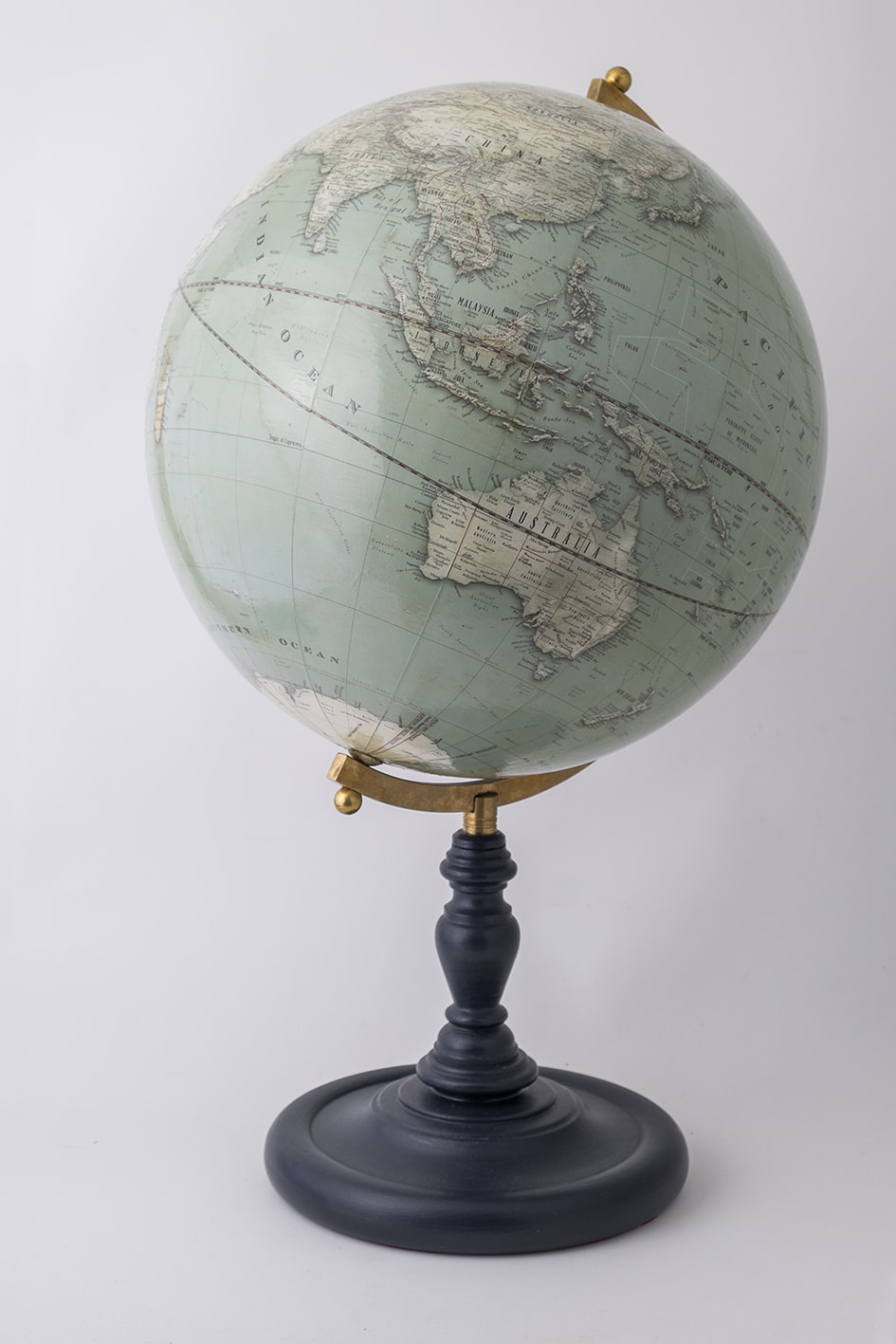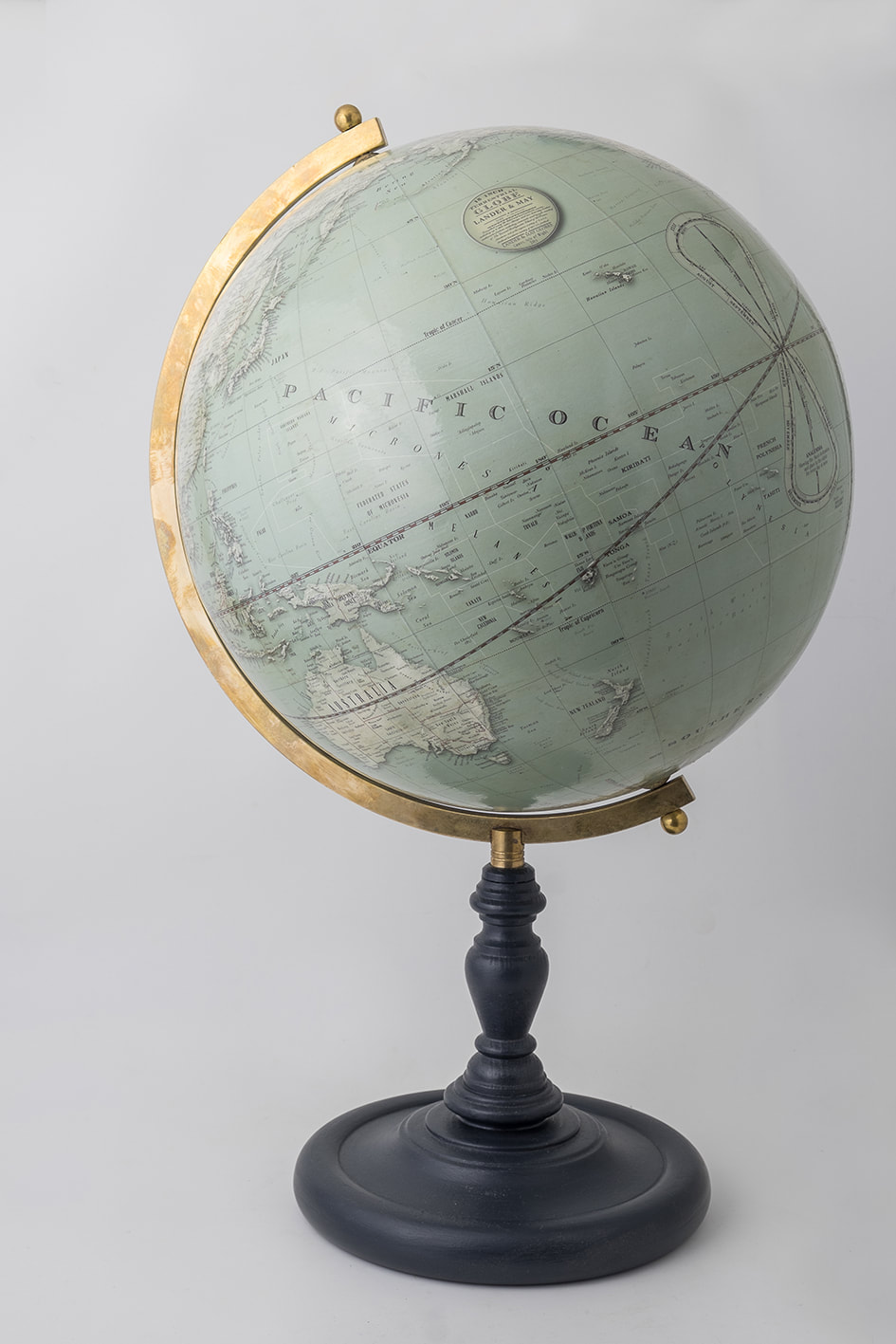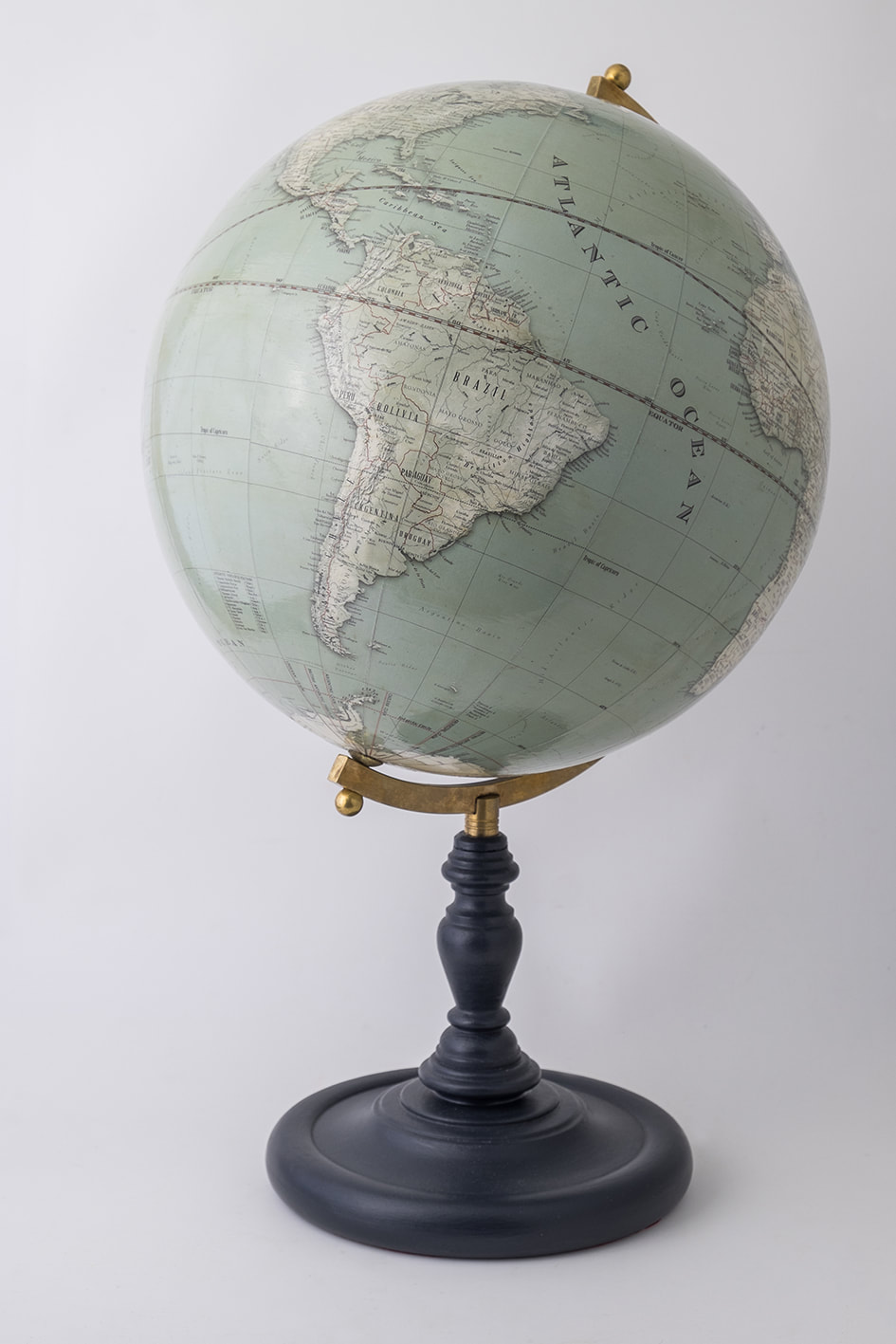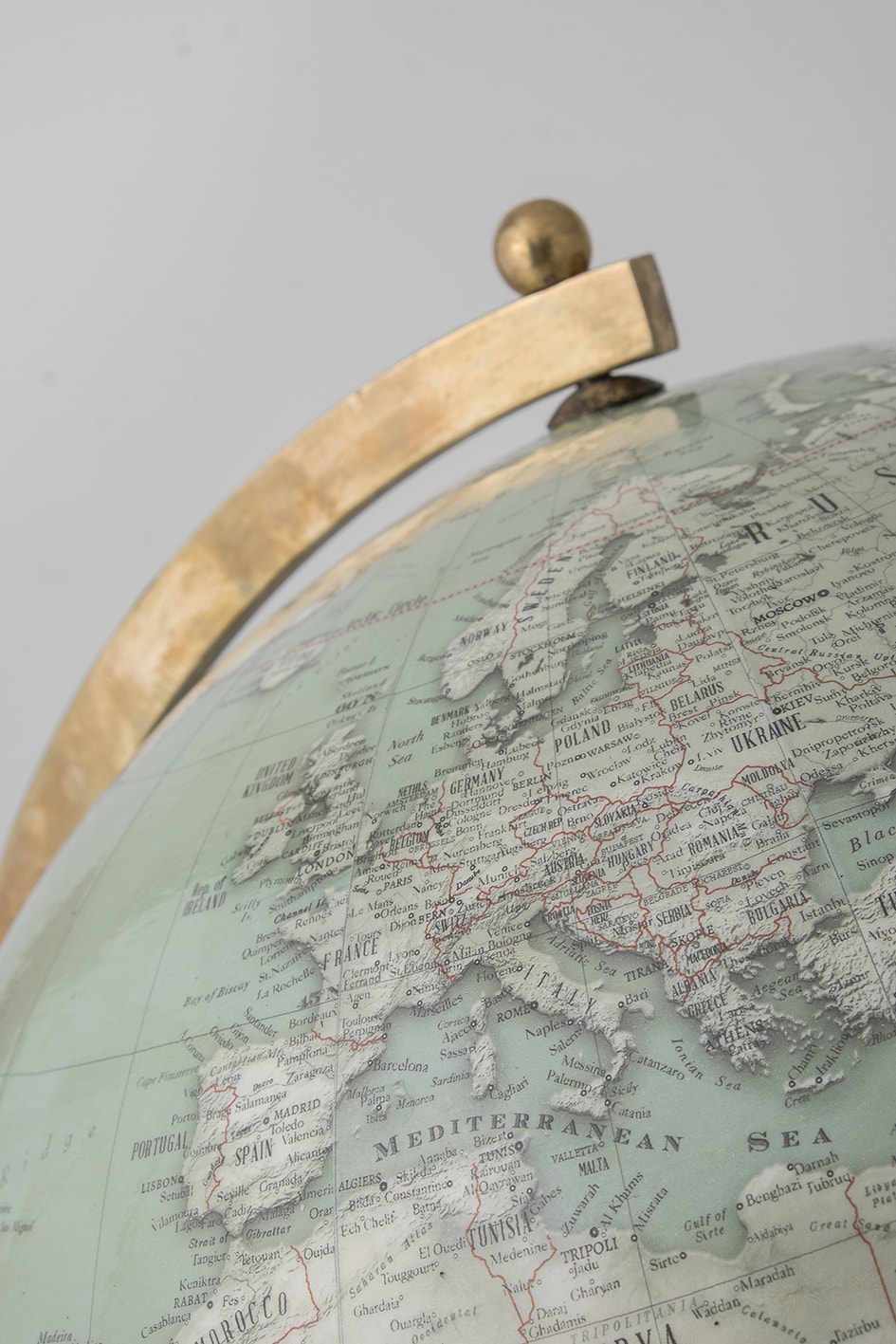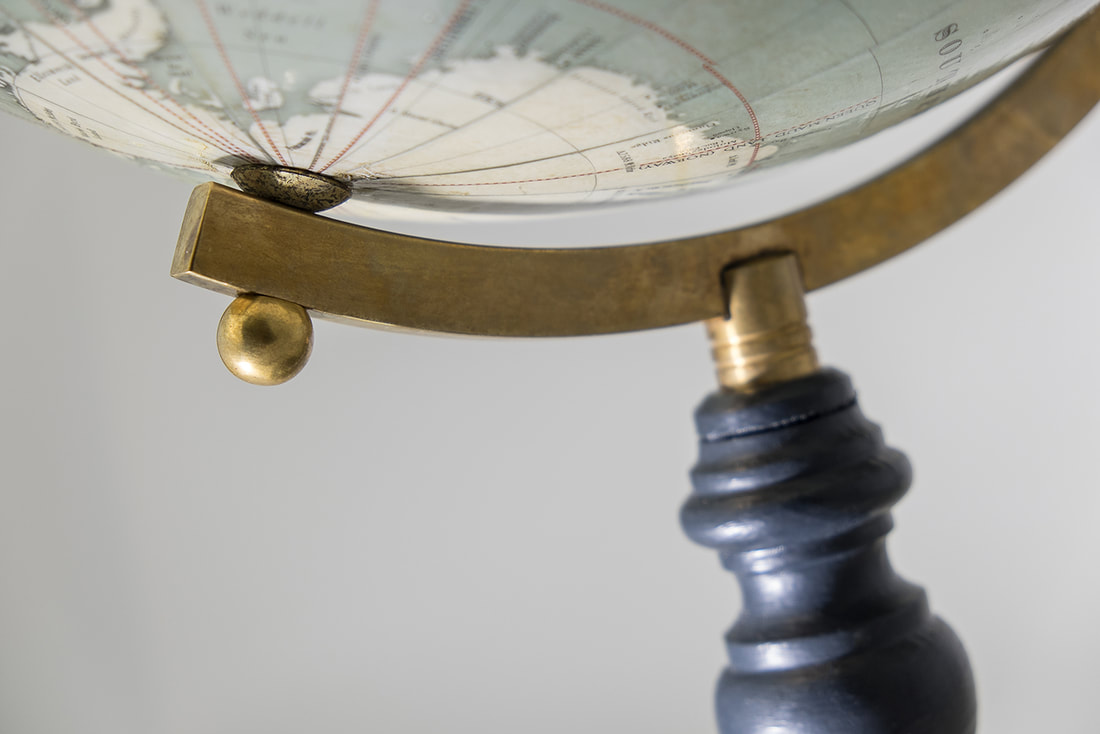Modern Day Classic. Vintage version
|
This 15 inch diameter globe shares the same cartographic detail as the contemporary version but is presented in a classic vintage style.
The cartography is constantly updated and features 2780 cities and towns, 730 islands, 610 seas/rivers/lakes and 490 seamounts, troughs and similar bathymetric detail. Hard wearing lacquer provides a aged protective barrier and is also U.V. resistant. It sits in an aged brass arm atop a turned hardwood base finished in matt black. Stands at 65 cms It can be personalised, please see here for further details Modern Day Classic - Vintage versionPrice includes postage to Mainland UK. Please inquire for international shipping rates. |

